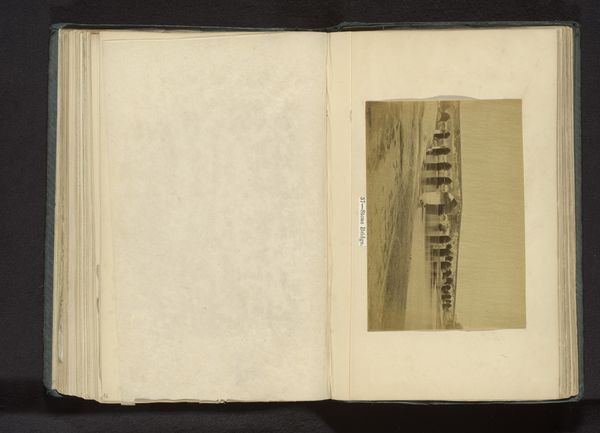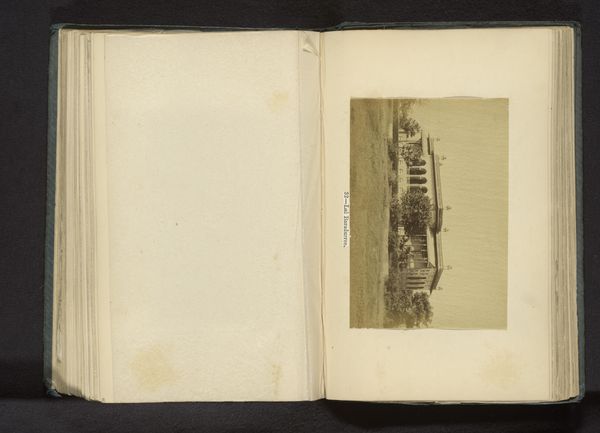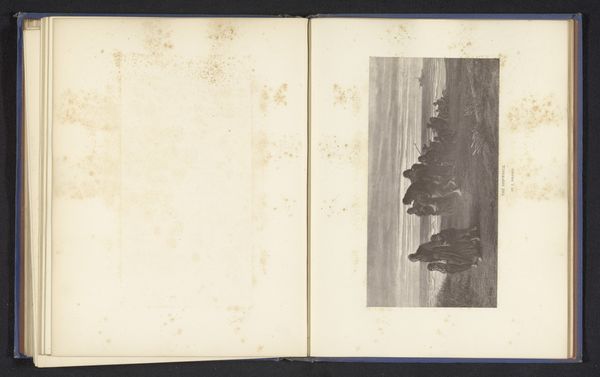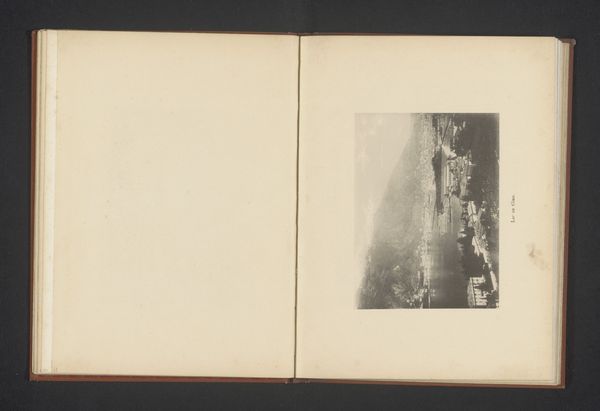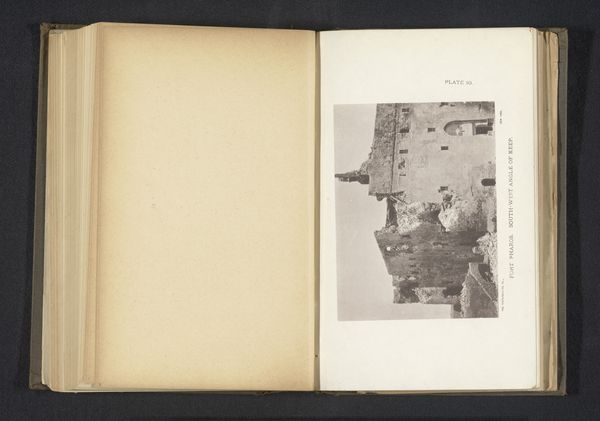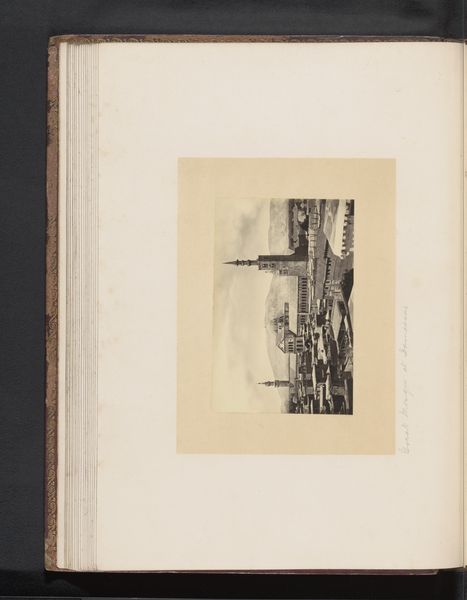
collage, print, etching, textile, photography, albumen-print
#
collage
# print
#
etching
#
landscape
#
textile
#
photography
#
albumen-print
Dimensions: height 110 mm, width 135 mm
Copyright: Rijks Museum: Open Domain
Curator: Let's discuss this compelling landscape print entitled “Gezicht op het fort op Pharos.” Created before 1885 by an anonymous artist, it uses techniques like collage, etching, and albumen print photography. Editor: Immediately striking—the desaturated sepia tones give it an aura of antiquity. I'm curious how those media interact to affect surface texture. Curator: It is suggestive of broader themes: the documentation of colonial encounters through the lens of architectural degradation and historical conflict. How are narratives of power encoded within this image? It captures a moment of implied violence with visible structural damage; the printed caption clarifies this scene: “showing the effect of the British shell." Editor: True. Compositionally, the fort looms, off-center and dominating the composition, which might reflect military aims for this document—as strategic information, maybe? I notice linear textures along the sea that suggest a strong current pulling us, the viewer, toward that fort and damage. Curator: And think about the gaze inherent in photography itself in this period. As a colonial power, Britain controlled representation of the landscape. Who was empowered to photograph—and for what political reasons? The gaze itself carries power and privilege here. Editor: I'm drawn to its visual story of time and erosion, where architectural signs speak through deterioration itself, implying that those structures can fall. Curator: Absolutely. Considering its pre-1885 production, we should explore how images like these circulated as evidence, shaping public opinion on military actions. It reminds me of similar depictions of imperial conquests... propaganda—a discourse around dominance and decline is constructed here. Editor: I appreciate considering it with an awareness of photography's historic power relations, seeing beyond what at first seemed just ruins. Curator: Indeed, recognizing this image operates within specific historical, social, and technological contexts allows a richer reading.
Comments
No comments
Be the first to comment and join the conversation on the ultimate creative platform.

